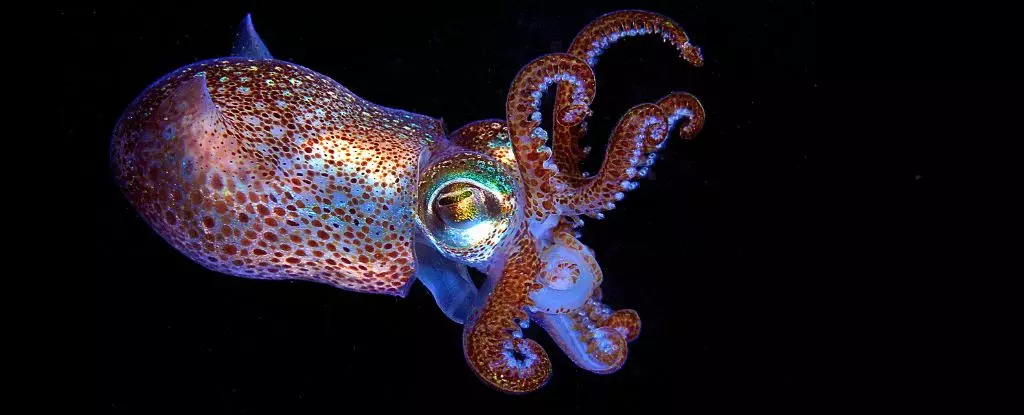Among the many wonders of the animal kingdom, the color-changing capabilities of cephalopods like squid, octopus, and cuttlefish stand out for their astonishing complexity. These creatures possess chromatophores—tiny organs laden with pigments—that allow them to camouflage and communicate in dazzling displays of color. While this extraordinary trait has fascinated scientists for generations, a groundbreaking discovery by researchers at Northeastern University suggests there could be more than mere biological artistry at play. This research shows that these pigments function not just for visual deception but may also play a role in converting light into electricity, hinting at a solar-powered communication system that could redefine the boundaries of energy usage in nature.
The Solar Cell Revelation
Biochemist Taehwan Kim and his colleagues embarked on an investigation using chromatophores from the longfin inshore squid (Doryteuthis pealeii). They constructed a photovoltaic cell to test if these pigments could facilitate the conversion of light into electrical energy. Their findings were nothing short of fascinating: the pigments were capable of transferring charge when exposed to simulated sunlight, thereby producing a photocurrent. This means that when the squid’s chromatophores are activated by light, they not only change color but potentially generate electricity that could be used to power biological processes.
This revelation raises some important questions: Can we draw parallels between biological organisms and technology? What if organic systems, like those found in cephalopods, offer solutions to energy challenges we face today? The potential for this natural photonic system to inspire advancements in sustainable energy solutions could be game-changing. If these pigments can indeed convert light into usable electrical energy effectively underwater—where light predominantly filters to lower wavelengths—it suggests an efficiency that outstrips many of our current solar technologies.
A Dance of Electrons
One of the most compelling aspects of the researchers’ findings is the implications of electrical communication between chromatophores. The chromatophores are not solitary cells but work in conjunction with one another, amplifying their signal in a synchronized manner that allows for rapid and complex color displays. When light penetrates the skin, photons interact with the pigments, triggering a redox reaction that releases an electron, creating a charge. This charge then appears to propagate among adjacent chromatophores.
Leila Deravi, a fellow biochemist at Northeastern University, marvels at the squid’s ability to instantly assess and respond to its environment, highlighting that their adaptability is not just remarkable but intricate. It raises an essential point about biological systems: if nature has evolved such efficiency, what lessons can we apply to our own technological advances? Shouldn’t the in-depth investigation of creatures such as squid lead us to innovate more advanced materials for energy generation?
Applications to Technology and Beyond
If the efficiency of cephalopod pigments can be harnessed, the implications reach far beyond marine biology. Imagine integrating a system mimicking chromatophores into consumer electronics or smart fabrics that could generate energy from sunlight while adapting their appearance based on environmental cues. The concept of intelligent materials that not only respond to light but also harness its energy fundamentally changes the landscape of wearable technologies and electronics.
As we grapple with an escalating energy crisis exacerbated by climate change, the exploration of biological systems such as that of the squid may provide unforeseen pathways toward sustainability. This discovery could spur collaborative efforts across disciplines, merging biology, materials science, and robotics in an unprecedented way. The future could see technologies that emulate nature’s resilience and efficiency, lightening our collective environmental impact.
The interplay between cephalopod pigments and solar energy conversion could open the doors to transformative applications, revealing the untapped potential that nature holds in the quest for renewable sources of energy. The remarkable synergy of biology and physics not only inspires awe but reminds us to look to the world around us for innovative solutions to modern challenges.

